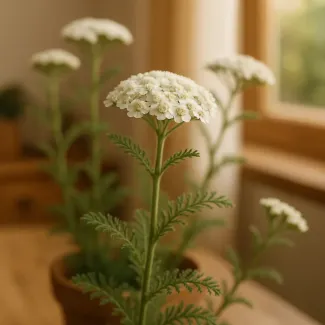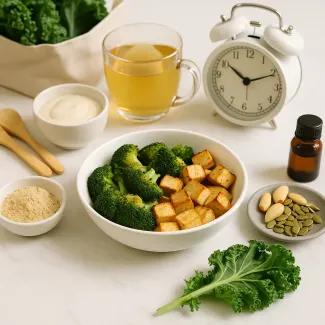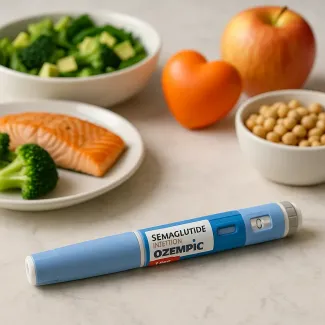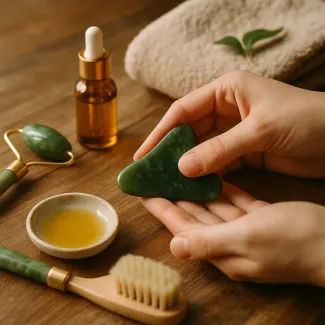
Nature’s Vascular Ally: How Yarrow Supports Vein Health and Reduces Inflammation
A centuries-old remedy finds its place in modern holistic health
Yarrow (Achillea millefolium), a flowering perennial known for its feather-like leaves and delicate white to pink blooms, has captivated herbalists for generations. Today, it is regaining attention for its unique ability to support vascular health, enhance blood circulation, and offer natural anti-inflammatory effects. Beyond its folklore origins, modern wellness seekers are rediscovering this plant’s versatility in addressing a range of health concerns, particularly related to the circulatory system, chronic inflammation, and vein discomfort.
Traditional uses of yarrow in herbal medicine
Achillea millefolium has been used across many cultures, from Native American poultices to European tinctures. While traditionally employed for wound healing and digestive aid, its effect on the blood vessels and inflammatory processes has brought it to the forefront of natural therapies.
Its historical nickname, “nosebleed plant,” reflects its styptic properties—meaning it can slow bleeding. But the very properties that helped stop bleeding externally also support internal circulation: yarrow promotes microcirculation, vasodilation, and helps reduce venous pressure, making it particularly interesting for people dealing with poor vein tone, cold extremities, or chronic venous insufficiency.
Yarrow and the vascular system
Yarrow has a relaxing effect on smooth muscle tissues, including those lining the blood vessels. This supports vasodilation—the widening of blood vessels—which in turn improves blood flow and oxygen delivery throughout the body. For people who experience cold hands and feet, sluggish circulation, or tension in peripheral vessels, yarrow may serve as a gentle, botanical aid.
The plant contains a cocktail of bioactive compounds such as flavonoids, alkaloids, and sesquiterpene lactones that contribute to this action. In particular, its flavonoids help stabilize capillary walls, making them less prone to leakage or fragility—an important factor in maintaining healthy skin and preventing spider veins or bruising.
Natural support for varicose veins and leg fatigue
For individuals who suffer from tired, heavy legs, varicose veins, or chronic leg swelling, yarrow offers gentle vascular support. When taken regularly, in teas or extracts, it may help stimulate lymphatic drainage and reduce venous congestion. This makes it especially relevant for people who stand or sit for long periods, such as office workers, retail professionals, or anyone with a sedentary lifestyle.
Additionally, topical applications of yarrow-infused oils or balms may soothe the superficial venous system, reduce the sensation of heat or pressure in the legs, and support microcirculatory balance in the skin.
The anti-inflammatory action of Achillea millefolium
Chronic inflammation is at the core of many modern ailments—joint pain, skin conditions, digestive imbalance, and cardiovascular risks. Yarrow’s anti-inflammatory activity stems from its volatile oils, particularly azulene and chamazulene, which are known for their soothing and calming effects on inflamed tissues.
Yarrow doesn’t act like a painkiller; instead, it modulates immune response, gently helping the body bring down unnecessary or excessive inflammation. This makes it a valuable addition to a daily wellness routine for those managing low-grade chronic inflammation, autoimmune flare-ups, or general immune dysregulation.
Hormonal influence and menstrual relief
One lesser-known application of yarrow is its ability to balance hormones, particularly in the context of the menstrual cycle. Its antispasmodic properties make it useful in reducing uterine cramps, while its circulatory benefits can help improve pelvic blood flow, supporting hormonal balance and menstrual regularity.
Because of its mild phytoestrogenic components, it may support perimenopausal women experiencing irregular cycles, bloating, and fluid retention. Drinking yarrow tea in the days leading up to menstruation is a time-honored practice for easing menstrual discomfort.
Skin, veins, and anti-aging synergy
The skin is often a reflection of our internal circulatory health. Yarrow’s ability to enhance capillary strength and support detoxification through the lymph system indirectly benefits the skin. Conditions like rosacea, eczema, or sensitive skin prone to redness can respond positively to topical yarrow applications.
Its astringent nature helps tighten tissues, reducing the appearance of pores and fine lines, while its antioxidant content counters free radical damage—a key contributor to premature aging. Whether consumed internally or applied as part of a natural skincare routine, yarrow supports a healthy skin barrier and even tone.
How to use yarrow safely and effectively
Yarrow is available in many forms: dried herb, tea, tincture, capsule, and essential oil. The dried flowers can be steeped into a circulation-enhancing tea, ideally consumed between meals. A standard infusion might include 1 tsp of dried yarrow per 250 ml cup, steeped for 10 minutes.
For more targeted vascular support, fluid extracts or tinctures offer higher concentrations and can be used in drop form, usually diluted in water or herbal decoctions. Meanwhile, yarrow essential oil should never be used internally but can be diluted in carrier oils and used for massage of the legs, helping to stimulate blood flow and soothe tired muscles.
When and why to consider yarrow
Yarrow is particularly useful:
- During long hours of sitting or standing
- In cases of chronic leg swelling
- As part of postpartum recovery for vein tone
- For cold hands and feet due to poor circulation
- For mild hormonal imbalances
- In post-exercise recovery to ease inflammation
It’s an ideal ally for people over 40, whose vascular elasticity may start to decline. Incorporating yarrow may gently tone the blood vessels, reduce inflammatory markers, and bring a sense of renewed vitality, especially when combined with hydration, moderate movement, and nutrient-rich meals.
Precautions and contraindications
Despite its many benefits, yarrow is not for everyone. Individuals who are pregnant, breastfeeding, or taking blood thinners should consult a professional before incorporating it. Those with ragweed allergies should also use caution, as yarrow belongs to the same plant family.
Prolonged or high-dose use may cause skin sensitivity to sunlight or mild digestive disturbances. As with all herbs, moderation and guidance are key to achieving the desired effect.
Synergies with other herbs
Yarrow pairs beautifully with herbs like:
- Hawthorn, for heart and vascular support
- Calendula, for lymphatic movement and skin health
- Ginger, to enhance circulation and warm the extremities
- Nettle, for anti-inflammatory and mineral-rich synergy
These combinations can be found in vascular-supportive teas, topical blends, or botanical tincture formulas.
Practical daily integration
For those looking to integrate yarrow into a modern health lifestyle, start small:
- A cup of yarrow tea after meals supports digestion and circulation.
- A few drops of tincture in morning water can provide daily tonification.
- Add a yarrow-infused oil to your self-massage routine, particularly for calves and ankles.
- Use a yarrow hydrosol in facial care to tone and refresh skin after cleansing.
Making these rituals a regular part of your day can lead to gradual improvements in how your body circulates blood, handles inflammation, and manages hormonal transitions.
Yarrow as part of anti-aging and wellness after 30
Once we enter our 30s and 40s, the body's natural ability to regulate vascular tone, inflammation, and hormonal rhythms begins to shift. This is where gentle herbs like yarrow shine. They don’t force change—they encourage the body’s innate intelligence to regain balance.
From supporting venous return to easing monthly bloating, yarrow has a way of quietly recalibrating the system, making it an excellent tool for long-term wellness. It works best when integrated into daily wellness, not just used as a remedy during illness.
Why yarrow deserves a place in your home apothecary
In an era filled with synthetic interventions, yarrow remains a symbol of simplicity and natural healing. Whether used for vascular health, inflammation reduction, hormonal balance, or skin resilience, it offers a multi-layered approach to wellbeing.
Its presence in the garden invites pollinators. Its use in the kitchen and bathroom offers daily benefits. And its story—from ancient warriors to modern wellness seekers—continues to evolve. Yarrow is not just a herb. It’s a vibrant ally in the pursuit of circulatory vitality and holistic resilience.





